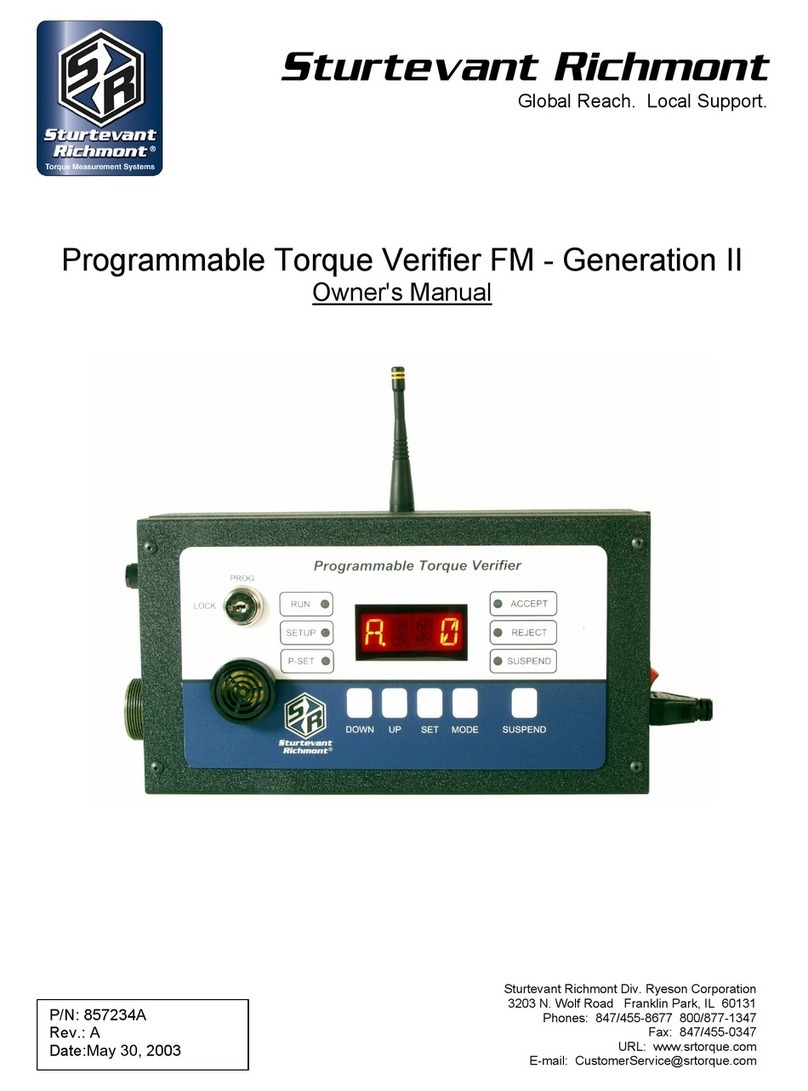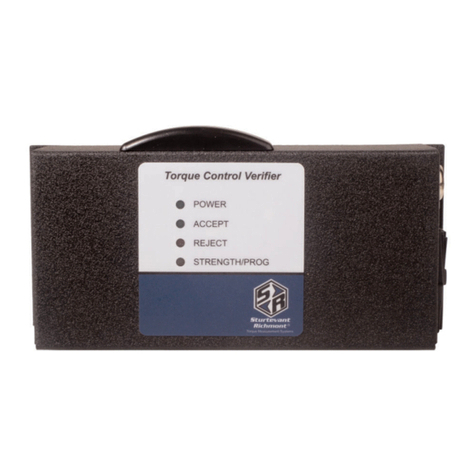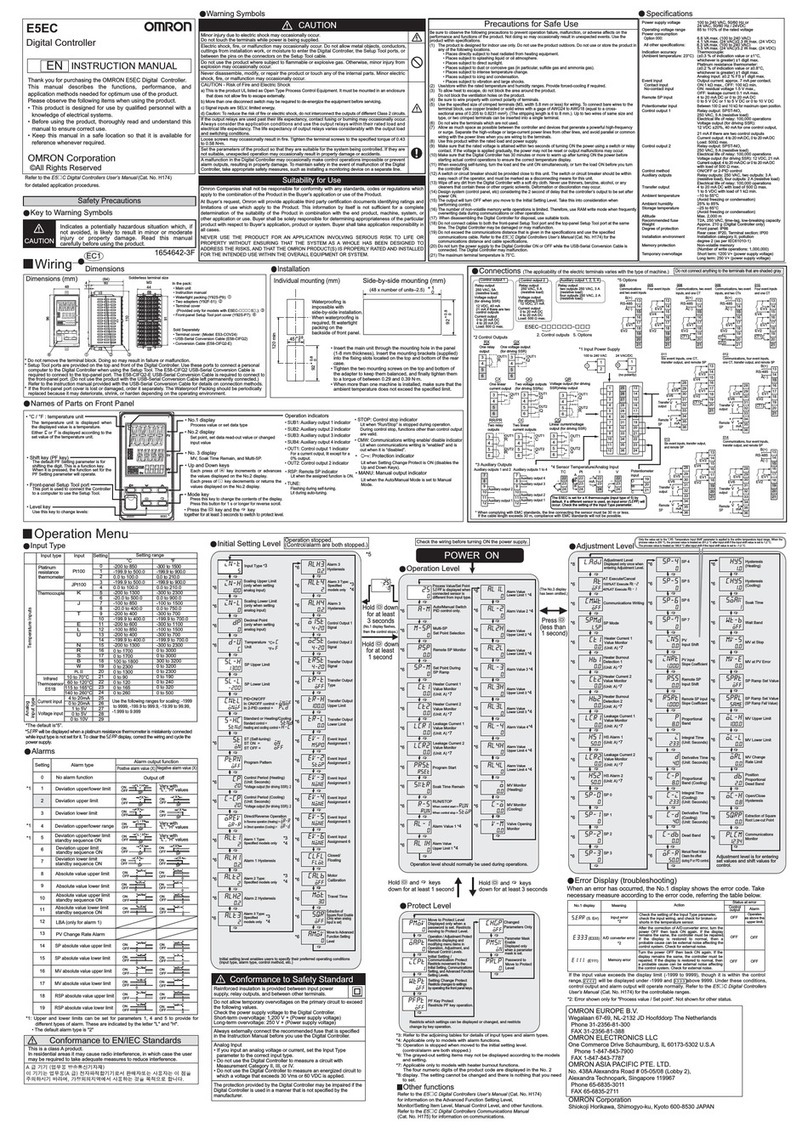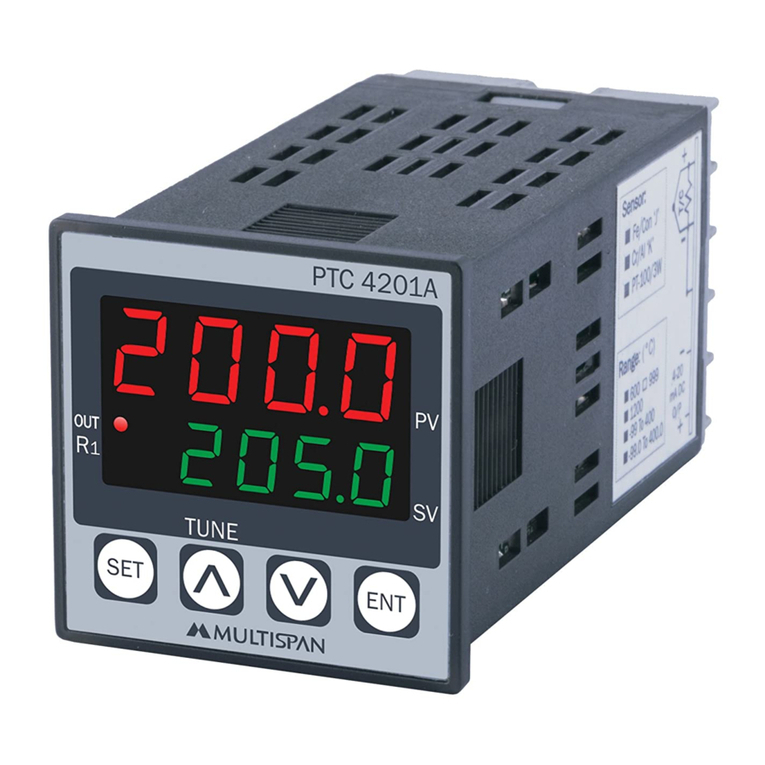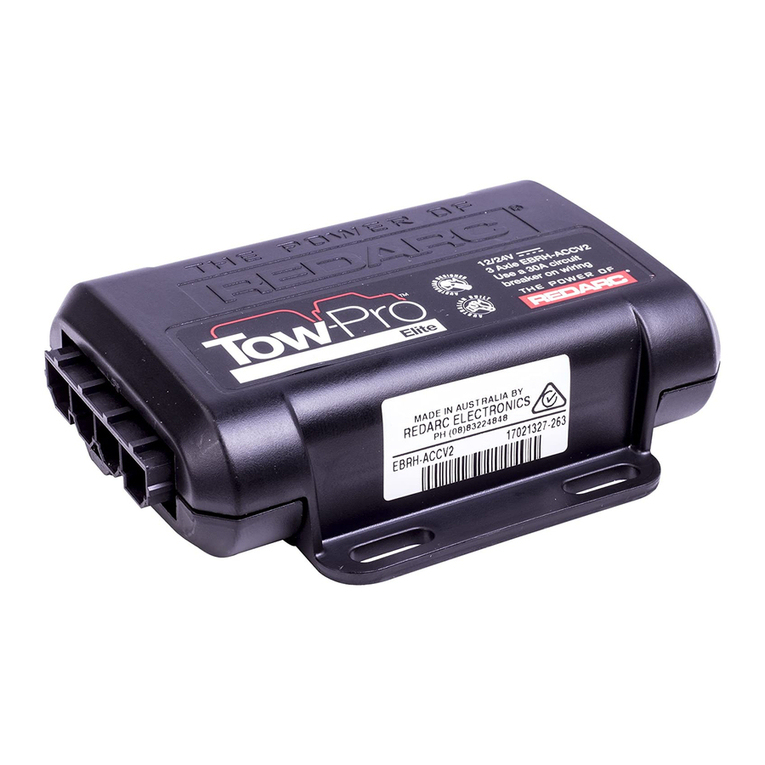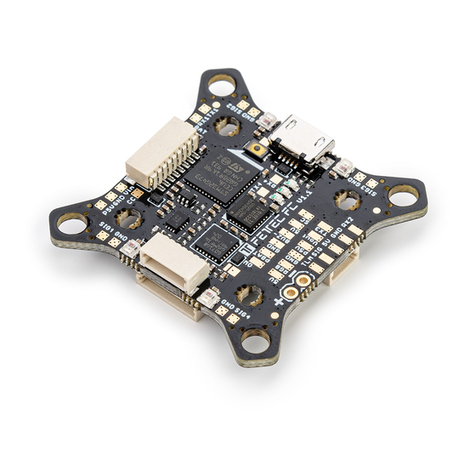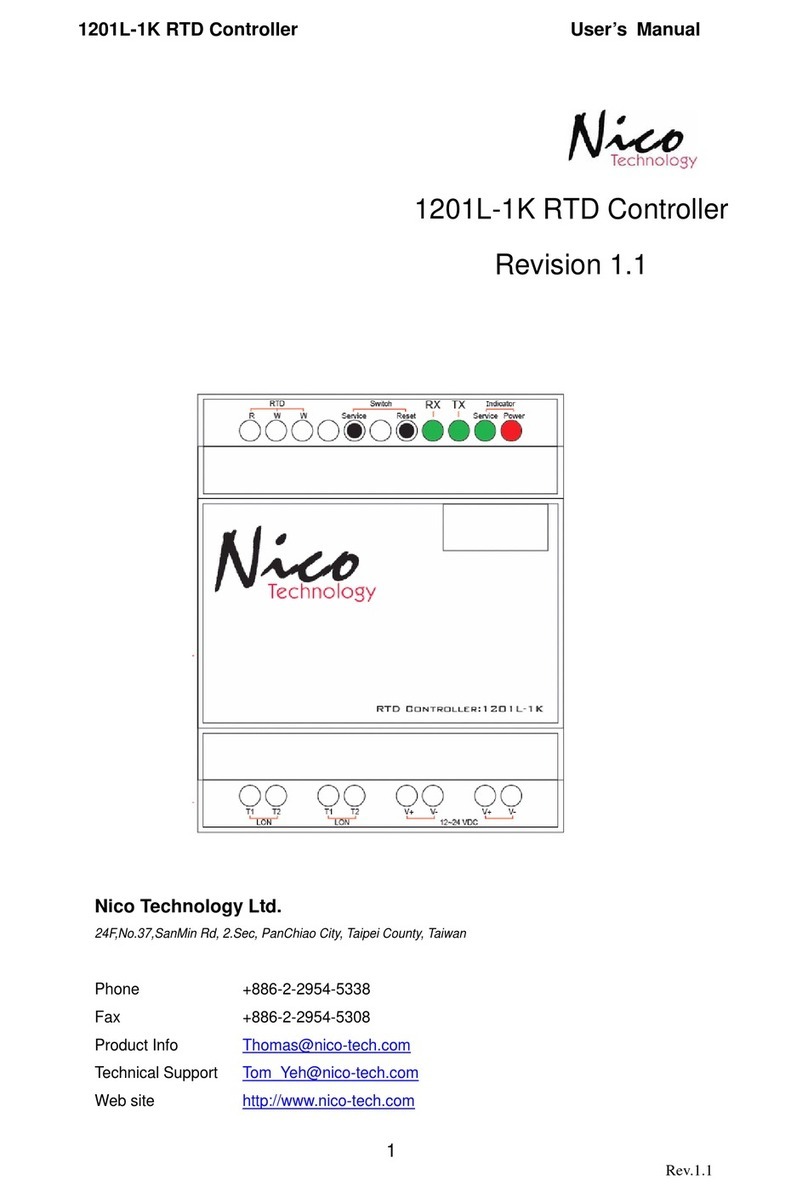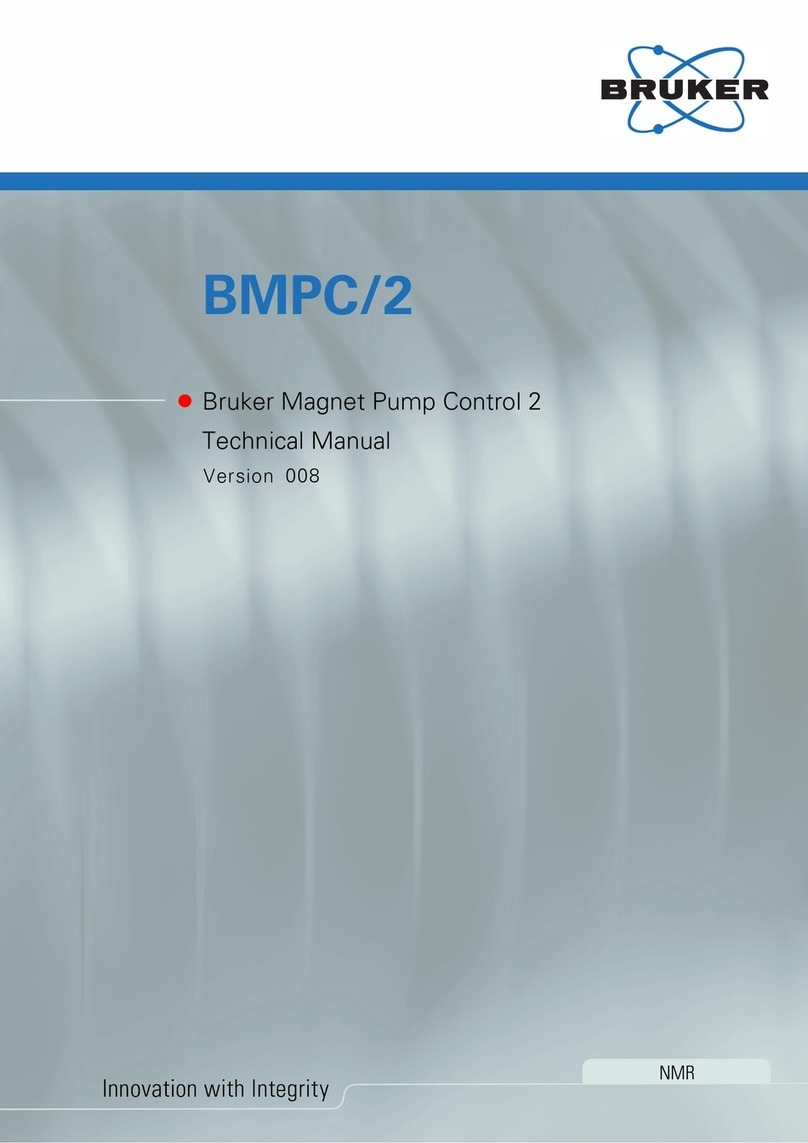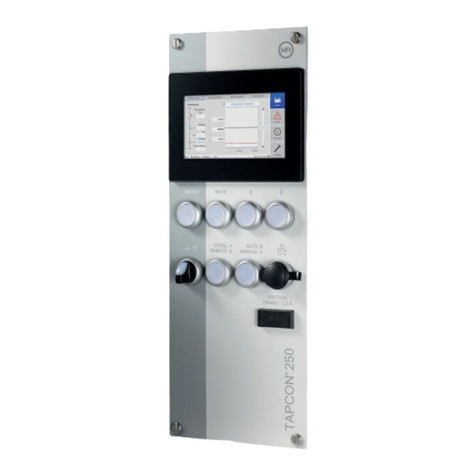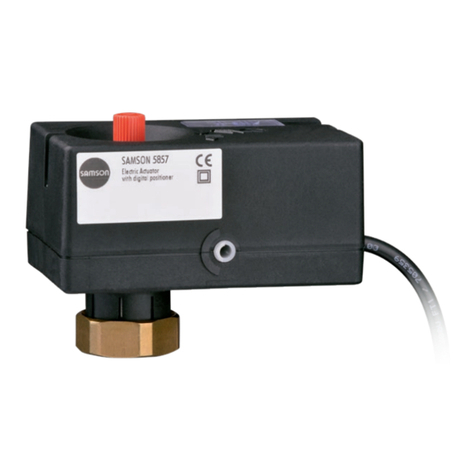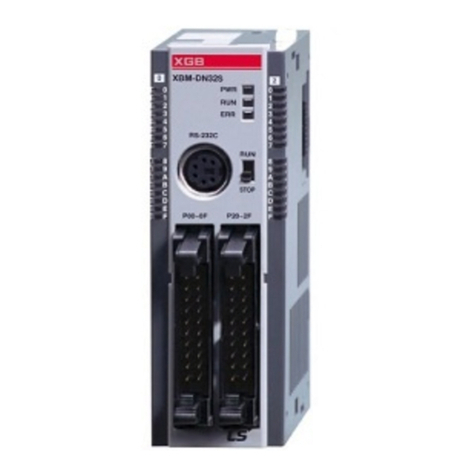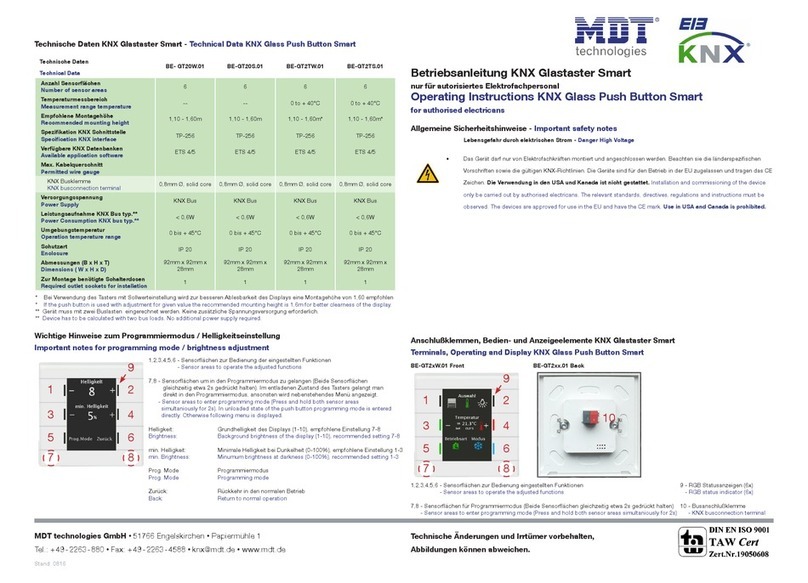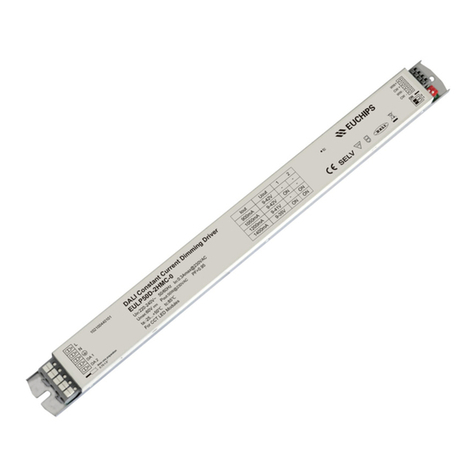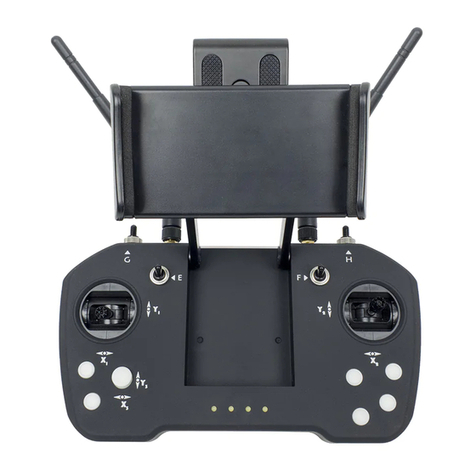Sturtevant Richmont Global 400mp User manual

!
Global 400mp User Manual
v4.0!
!
17#August#2016#
#
#
#

Global 400mp User Manual 2 of 72 v4.0
17 August 2016
Table of Contents
Quick Start ...................................................................................................................................... 4!
Chapter 1: Overview ....................................................................................................................... 9!
Warnings................................................................................................................................... 10!
Cautions .................................................................................................................................... 10!
Unit Overview........................................................................................................................... 11!
Compatible Tools...................................................................................................................... 11!
Chapter 2: Using the unit .............................................................................................................. 12!
Concepts.................................................................................................................................... 13!
Run Screen................................................................................................................................ 14!
History....................................................................................................................................... 16!
Unit Status................................................................................................................................. 17!
Rundown Graph........................................................................................................................ 17!
Network Status.......................................................................................................................... 18!
Tool Status ................................................................................................................................ 19!
I/O State .................................................................................................................................... 20!
Chapter 3: Configuring the unit .................................................................................................... 21!
Introduction............................................................................................................................... 22!
Saving Configuration Changes ................................................................................................. 22!
Entering letters.......................................................................................................................... 22!
Main Menu................................................................................................................................ 23!
Tools ......................................................................................................................................... 24!
Parameters................................................................................................................................. 28!
Jobs ........................................................................................................................................... 33!
Network Setup .......................................................................................................................... 35!
Unit Setup ................................................................................................................................. 36!
Events........................................................................................................................................ 42!
Network Log ............................................................................................................................. 43!
Chapter 4: Serial communications................................................................................................ 44!
Introduction............................................................................................................................... 45!
Barcode ..................................................................................................................................... 45!

Global 400mp User Manual 3 of 72 v4.0
17 August 2016
Serial Printer ............................................................................................................................. 48!
Chapter 5: Atlas Copco Open Protocol......................................................................................... 50!
Introduction............................................................................................................................... 51!
Configuration Options .............................................................................................................. 51!
Supported Commands............................................................................................................... 54!
Unsupported Commands........................................................................................................... 55!
Chapter 6: ToolsNet...................................................................................................................... 57!
Introduction............................................................................................................................... 58!
Configuration Options .............................................................................................................. 58!
Chapter 7: EtherNet/IPTM.............................................................................................................. 61!
Chapter 8: Data Management ....................................................................................................... 66!
Download data to USB ............................................................................................................. 67!
Upload USB file to device ........................................................................................................ 68!
Chapter 9: Firmware Updates ....................................................................................................... 69!
Chapter 10: Product Specifications............................................................................................... 71!
Dimensions ............................................................................................................................... 72!
Radio Information..................................................................................................................... 72!

Global 400mp User Manual 4 of 72 v4.0
Quick Start 17 August 2016
Quick Start

Global 400mp User Manual 5 of 72 v4.0
Quick Start 17 August 2016
This quick start will guide you through the process of configuring the unit for first time use.
Plug the provided power cable into the unit and 100-240
VAC power and turn on the power switch. The beeper
should sound a series of quick beeps and the display should
show the loading progress.
Once the loading is completed, the unit should go to the
Run screen. If the unit stays on the loading screen with an
error, please contact your local SR Distributor, or call
Sturtevant Richmont at +1-847-455-8677. Email is
To use a tool with the Global 400mp, you must first “learn”
(connect the radios) in the tool and the Global 400mp. To
do so, press the button below MENU.
Enter the password (0104 by default) using the numeric
keypad and pressing ENT when completed.
In the menu, press the right arrow to select TOOLS and
press ENT.

Global 400mp User Manual 6 of 72 v4.0
Quick Start 17 August 2016
In the tools menu, press ENT to go to the main tools page.
If the tool you are going to learn to the Global 400mp has
previously been used with another unit, make sure the tool
has been “forgotten” (radio disconnected) from that unit
before continuing. Press the button beneath LEARN to
begin the learn process.
Follow the directions on screen to learn the tool.
Once the tool has found the unit, you may need to perform
an additional step for the unit to know which type of tool
was just learned. Holding tools, air tools, and newer click
tools can be distinguished by the unit. The 1200 Series and
1250 Series Exacta digital tools and older click tools will
require some additional information. The digital tools will
automatically transmit their serial number in a few seconds.
However, if you are learning an older click tool, you will
need to perform a tightening (good or bad) with the wrench,
or push the appropriate button on screen.

Global 400mp User Manual 7 of 72 v4.0
Quick Start 17 August 2016
Once the tool type is identified, you must enter the tool’s
serial number. The PST 1200, SLTC FM, and HT Series
holding tools require manual entry of the serial number.
Digital tools report its serial number automatically and this
step will be skipped.
The serial number entered in this step will be used as the
default tool name.
Once the tool learn is completed, the unit will show a
summary of the new tool information. Press SAVE to store
the tool information and continue.
The unit will return to the Tools screen with the just learned
tool now shown.
Before you can run the tool, you must first assign it to a
parameter. Return to the menu by pressing ESC twice.
Then press ENT to go to the Select Interface screen. By
default, tools learn into interface 1. Press ENT to select
interface 1 and go to the Choose Parameter or Job screen.

Global 400mp User Manual 8 of 72 v4.0
Quick Start 17 August 2016
Press the button below EDIT to go to the Parameter Edit
screen. The parameter number will remain white until the
parameter has been successfully set up.
Press the down arrow to move the cursor to the Primary
Tool row, followed by 1 to assign the tool to the parameter.
Press ENT or the button below SAVE to save the changes
and return to the Choose Parameter screen.
Parameter 1 should now be shown in black instead of white
to indicate that it was set up successfully. Press the button
below SELECT to select Parameter 1.
You will be returned to the Run screen, now with Parameter
1 selected. You can now perform tightenings with Tool 1
that will be monitored, stored, and reported by the Global
400mp.

Global 400mp User Manual 9 of 72 v4.0
Chapter 1: Overview 17 August 2016
Chapter 1: Overview

Global 400mp User Manual 10 of 72 v4.0
Chapter 1: Overview 17 August 2016
Warnings
Do not disassemble the unit for repair or modifications. There is a high
electrical voltage inside the unit that could cause electric shock.
Do not allow any type of liquid to come into contact with any part of the
unit.
Insert all fittings fully into their mating receptacles. Failure to do so could
result in injury.
Do not fold, bend or apply excessive force to any cable or fitting.
Cautions
Please use caution when handling this or any other electrical appliance.
• This unit accepts an AC input voltage from 100-240 VAC. Trying to operate this unit with a
voltage outside that range may cause damage to the unit.
• Avoid placing or storing this unit in a location where it may become wet or dust covered.
• Do not place or mount this unit in an unstable area.
• Dropping this unit may result in personal injury or damage to the unit.
• Before performing any maintenance on the unit, make sure to turn it off and remove the
power plugs.
• There are no user serviceable parts inside the main enclosure of the unit.

Global 400mp User Manual 11 of 72 v4.0
Chapter 1: Overview 17 August 2016
Unit Overview
The Global 400mp is equipped with a color LCD display, four function
keys immediately below the LCD, a numeric keypad with decimal
point, navigation keys, and enter and escape buttons. The current
function of the function keys is indicated at the bottom of the LCD
above the button.
The beeper provides an audio indication for any combination of
accepts, rejects, and batch completions. The beeper volume can be
adjusted through the user interface. (See the Unit Setup section in the
next chapter.)
The Global 400mp has two RJ-45 Ethernet ports to allow it to be used
in a chain or ring network configuration.
The USB-A connector is used to provide firmware updates via a
standard USB drive.
The RS232 DSUB9 connector can be used with a serial barcode reader
or serial printer.
The 5-pin remote connector connects to other devices that provide I/O
capabilities.
The power plug accepts 100-240 VAC at 50-60 Hz.
Compatible Tools
The Global 400mp works with the following models of tools:
• SLTC-FM 2.4 GHz preset clicker-type torque wrenches
• 1200-Series Exacta 2 digital torque wrenches
• 1250-Series Exacta 2 Torque and Angle wrenches
• PST series air tool transducers (requires transmitter software version 2)
• HT Series Holding wrenches

Global 400mp User Manual 12 of 72 v4.0
Chapter 1: Overview 17 August 2016
Chapter 2: Using the unit

Global 400mp User Manual 13 of 72 v4.0
Chapter 1: Overview 17 August 2016
Concepts
Interfaces
The Global 400mp has 4 interfaces. Interfaces within the Global 400mp work almost like having
4 logical process monitors inside the single physical Global 400mp. Some settings, such as IP
Address and beeper settings, are shared between the interfaces. Each interface has its own
parameters and jobs as well as its own tightening log and can be controlled separately by a plant
control system.
Tools
The Global 400mp can associate with up to 16 Sturtevant Richmont radio torque tools and 8
holding tools. At most, 4 torque tools and 4 holding tools will be active at a time, depending on
the selected operations. To use a tool with the Global 400mp, you must first “learn” (connect the
radio) the tool to the Global 400mp. The process to do this is described in the Quick Start.
Tools are not activated directly by the unit. Instead, they are activated when a parameter that
uses the tool is running. Tools are assigned to a single interface, which may be changed at any
time. A tool may be used by more than one parameter, but only by parameters belonging to the
same interface as the tool.
The Global 400mp can store some information about when calibration or preventative
maintenance should occur. These are set up in the Tool Configuration screen, which is described
in the next chapter.
Parameters
Parameters are the basic unit of operation for the Global 400mp. A parameter contains a tool to
run and some settings to use with it, such as the batch size and minimum and maximum torques.
The Global 400mp supports 40 parameters per interface. Each parameter must be associated
with one of the learned tools assigned to its interface before it can be run.
A parameter may additionally have one holding tool assigned.
Jobs
Jobs are the top level of operation in the Global 400mp, made up of multiple parameters that
must all run together in a sequence. The Global 400mp supports 20 jobs per interface with up to
30 steps (parameters or p-sets) each. A job will only use parameters belonging to the same
interface as the job. A job may have multiple parameters that use the same tool or even the same
parameter multiple times and may use parameters with different types of primary tools. When
defining a job, you may override the batch count for parameter steps in the job.

Global 400mp User Manual 14 of 72 v4.0
Chapter 1: Overview 17 August 2016
Run Screen
The run screen shows which parameter is currently running in each interface. Interface 1 appears
in the top left, interface 2 in the top right, interface 3 in the bottom left, and interface 4 in the
bottom right.
1. Count – The number of tightenings completed in the current batch of the parameter.
Repeated for each active parameter.
2. Batch – The number of tightenings required for the current batch of the parameter. Repeated
for each active parameter.
3. Parameter Name – Name of the parameter. Repeated for each active parameter.
4. Tool Name – Name of the tool for the parameter. Repeated for each active parameter
5. Torque Value – Value of the last torque received for the parameter. Only present for
parameters with Exacta tools. Repeated for each active Exacta parameter.
6. Tool Status Indicator – Shows the status of the tool for the parameter. Repeated for each
parameter.
7. Unit lock – Indicates if the unit is locked and requires a password to access menu functions
8. Unit Radio Status – Shows the status of the unit radio
9. Network Status – Shows the status of the Ethernet and current number of connections.
10. Function key 2 – Shows the current function of function key 2.
11. Function key 3 – Shows the current function of function key 3.
12. Function key 4 – Shows the current function of function key 4.
13. Suspend notification – When an interface is suspended, it will show the source of the
suspend. If an interface is suspended by multiple sources, only one will be shown.
14. Inactive parameter – When an interface has no active parameter, the interface slot will be
grayed out.

Global 400mp User Manual 15 of 72 v4.0
Chapter 1: Overview 17 August 2016
Tightening Notifications
Every time a tightening is received from a running tool, the background of the area of the screen
showing the current parameter and batch count for the tool will be shaded with a color indicating
the status of the tightening.
• Red – A rejected tightening occurred.
• Green – An accepted tightening occurred that did not complete a batch.
• Blue – An accepted tightening occurred that completed a batch. If the Global 400mp NOKs
setting is set to Count, this further indicates that no rejected tightenings were counted
towards this batch.
• Yellow – An accepted or rejected tightening occurred that completed a batch. This color will
only occur when the Global 400mp NOKs setting is set to Count and one or more rejected
tightenings were counted towards the current batch.
Tool Radio Status Codes
The radio status indicator for each active parameter shows the status of the tool radio for the
parameter. If no tool is assigned to an interface the radio status is not available. When the tool is
ready to run, the indicator should be green with no number. If the tool is not ready to run or a
warning or error condition occurs, the indicator will change to yellow for a warning or red for an
error and display a code to indicate the radio condition. The possible codes are:
Code
Color
Meaning
1
Red
Tool has not communicated with the unit since power-up
2
Yellow
Enabling or disabling tool
2
Red
Tool programming failed
3
Yellow
Tool is disabled
4
Yellow
The battery is low. It should be changed when possible to avoid interruptions in service.
4
Red
The battery is very low. Interruptions in service may occur until the battery is replaced.
5
Yellow
Radio signal strength is below recommended level for best performance
5
Red
Radio signal strength is below recommended minimum level for use
6
Yellow
Tool requires calibration
7
Yellow
Tool requires preventative maintenance
Unit Radio Status Indicator
The unit radio status indicator shows the status of the radio in the unit. In normal use, the
indicator should be green with no number. If the radio is not working correctly, the indicator
will be red with an error code.
Network Status Indicator
The network status indicator shows the status of the Ethernet ports on the unit. When the
Ethernet is used, the indicator will be green and show the number of currently active network
connections. If no Ethernet cable is plugged into either port, the indicator will be 0/yellow. If
the network initialization fails, the indicator will be red and show an error code. The Network
Status screen shows more detailed information.

Global 400mp User Manual 16 of 72 v4.0
Chapter 1: Overview 17 August 2016
History
Figure 1: Select Interface screen
Figure 2: History screen
Function keys
1. No function
2. PREVIOUS – Go to the previous page of more recent tightenings. When on the first page,
this key will be blank.
3. NEXT [ENT] – Go to the next page of older tightenings. When on the last page, this key
will be blank.
4. RETURN [ESC] – Returns to the Run Screen.
The History screen shows some information about the tightenings from an interface stored in unit
memory. More information about the tightenings is not shown but is available via the network
protocols. This screen shows:
• Time – The time the tightening occurred. The date is indicated at the top of the table and
each time it changes in a white row.
• T# – The tool number that produced the tightening
• Param – The number and name of the parameter that produced the tightening
• Count – The current batch count and batch size for the tightening
• Torque – The torque of the tightening. This value is only provided for digital tools. The unit
of torque will be whatever the unit of the parameter that produced the tightening was at the
time.
• Id – The tightening id number. This screen shows only the last 4 digits of the id number;
additional digits may be present in the network commands.

Global 400mp User Manual 17 of 72 v4.0
Chapter 1: Overview 17 August 2016
Unit Status
Figure 3: Unit Status screen
Function keys
1. GRAPH –Goes to the Rundown Graph screen to show the rundown graph for an air tool
active in an interface.
2. NETWORK – Go to the Network Status screen.
3. TOOL – Go to the Tool Status screen.
4. I/O – Go to the I/O State screen
The Unit Status screen shows some basic information about the current unit configuration that
may be useful for diagnostics purposes. Press ESC to return to the Run Screen
The average signal strength is for all tools learned to the unit and should be from 0 to -70 dBm.
If the signal strength is greater than -70 dBm, the unit may have frequent slow or failed
communication. To improve the signal strength, try bringing the unit and tools closer together,
changing the XBEE channel, or reducing sources of interference from the environment.
Last barcode shows the command number of the last barcode scanned (see Chapter 4: Serial
communications) or an error if the last attempt barcode could not be processed. Interface 1-4
VIN show what VIN will be included with tightenings for each interface.
Rundown Graph
Figure 4: Select Interface screen
Figure 5: Rundown Graph screen
Function keys
1. EDIT – Go to the Parameter Edit screen for the running parameter. This will require the
password to be entered.

Global 400mp User Manual 18 of 72 v4.0
Chapter 1: Overview 17 August 2016
2. No function
3. REFRESH – Refresh the graph with the data for the most recent run of the tool.
4. RETURN [ESC] – Returns to the Unit Status Screen.
The Rundown Graph screen retrieves and shows the last rundown from the active air tool in the
selected interface. If no air tool is active for the selected interface, no graph will be retrieved.
The rundown will be overlaid with yellow horizontal lines for each of the three thresholds and
vertical lines showing the timers, purple for Timer Min and Timer Max, blue for Timer Clutch.
Additionally, the total time for the rundown is shown at the right end of the horizontal axis.
Network Status
Figure 6: Network Status screen
The network status screen shows the current Ethernet status
of the unit. The MAC address is assigned by the factory
and cannot be changed. The IP address, subnet mask, and
gateway may be edited from the Network Setup - General
screen or assigned via DHCP.
The Ethernet 1 and 2 lines indicate if a physical cable
connection is detected on the corresponding Ethernet ports
of the unit. If no connection on a port is detected, the unit
will show “Not connected”. If a connection is detected, the
baud rate and duplex of the connection will be listed.
The rest of the screen shows some basic information about the active Ethernet connections. For
each connection, this page shows the source address, time of the last packet on the connection,
which interface the connection is to, and some protocol specific information, such as last MID
received or which EtherNet/IPTM connection points are being used.

Global 400mp User Manual 19 of 72 v4.0
Chapter 1: Overview 17 August 2016
Tool Status
Figure 7: Tool Status screen
Function keys
1. SIGNAL – Show the signal strength of each tool.
2. ADDRESS – Show the address of each tool
3. BATTERY – Shows the battery level of each tool, if available. Not all tools report battery
level.
4. HOLDING / TOOLS – Toggles between showing main tools and holding tools.
The Tool Status screen shows the status of the tools learned into the unit. This screen shows the
signal strength of the last packet from the tool but can also show the radio address and battery
level of the tools. Press ESC to return to the Unit Status screen.
For signal strength, a less negative number indicates a better signal (-50 dBm is better than -60
dBM). The screen shows a color based on the quality of the signal.
• Green – The signal from this radio is strong and will work at best performance.
• Yellow – The signal from the radio is weaker than recommended for best performance. The
radio should work but may have slower or occasionally interrupted communication with the
unit.
• Red – The signal from the radio is weaker than recommended for any use. The radio may
successfully transmit some results but will frequently have slow or failed communication
with the unit. If only one tool is red, bring it and unit closer together. If multiple tools are
red, consider using a different radio channel (changed from the Unit Setup screen).
• White – The Global 400mp has not received a packet from the tool since it started up.
For battery level, the charge remaining is shown. Not all tools report their current battery level.
The screen shows a color based on the level.
• Green – The battery is full and will work at best performance.
• Yellow – The battery is low and should be changed when possible.
• Red – The battery is very low and should be changed. The tool may fail to transmit some
results until the battery is changed.

Global 400mp User Manual 20 of 72 v4.0
Chapter 1: Overview 17 August 2016
I/O State
Figure 8: I/O State screen
Function keys
1. No function
2. PREVIOUS – Show the I/O device with the previous address. When showing the first
defined device, this key will be blank.
3. NEXT [ENT] – Show the I/O device with the next address. When showing the last defined
device, this key will be blank.
4. RETURN [ESC] – Returns to the Unit Status Screen.
The I/O State screen shows the status of the defined I/O devices. If an input or output is active,
its box will be shaded in green. Inactive inputs and outputs will be shown in yellow. See the
GIM400 User Manual for more information about the available I/O options.
Table of contents
Other Sturtevant Richmont Controllers manuals


